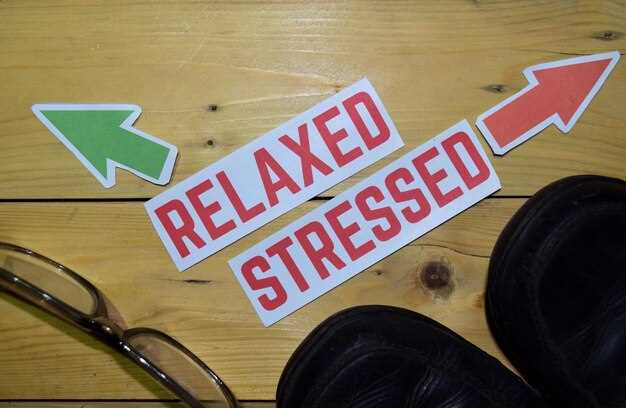Begin with a sixty-second grounding drill: inhale four counts, hold two, exhale six, repeat three cycles. This mindful pause lowers arousal and creates a balance between cognition and sensation. Visualize a known movie scene where a character finds steadiness; this demonstrates you are able to reframe the moment rather than letting tension rise.
Extend into a five-minute sequence: four rounds of paced breathing (inhale four, exhale six); a rapid body scan locating shoulders, jaw, belly; a brief relaxation gesture for each tense area; then a stable gaze on a fixed point to anchor attention, mindful focus; a relaxation response. This effective routine trains the nervous system to turn away from high arousal, fueling a steadier mood.
Over weeks, you become better able to hold calm longer. This routine helps you respond to stress rather than react, turning attention toward relaxation using a steady rhythm. Use the breath as fuel to sustain related goals; whilst you practice, you probably notice mood shifts, both subtle and meaningful.
As brodsky would suggest, brevity makes meaning; this approach keeps cognitive load low while preserving depth, offering a pragmatic path to balance during hectic days. The meaning here is practical: tiny, repeatable cycles train the nervous system, enabling calmer responses whenever stress spikes, probably improving mood and focus across tasks.
Immediate 5-Minute Reset Techniques You Can Use Right Now
-
Breath anchor: Box breathing for 60 seconds. Inhale through the nose for 4 seconds; hold 4; exhale for 4; hold 4. Repeat until body feels calmer. This simple cadence anchors the nervous system, reducing irritable mood at work.
-
Grounding scan: 5-4-3-2-1. Name 5 things you see; feel 4; hear 3; smell 2; taste 1. Your attention shifts to the present moment, reducing overwhelm.
-
Posture reset: Sit tall; drop shoulders; relax jaw; unclench fists. Pause for two breaths; feel gravity support your position.
-
Calming cue: Tell yourself this moment begins now; turn attention to a single comforting sound, a breath, or a texture.
-
Quick energy move: Stand, stretch arms overhead for 3 cycles; rotate wrists; sip water; keep gaze soft. These seconds restore alertness, reducing irritable mood at work.
For a shared moment, someone nearby can join; a brief group reset boosts focus for the whole team.
If someone else feels overwhelmed, invite them to participate.
Seem skeptical? This quick practice proves effective for many.
Where you sit, a quick rearrange improves comfort.
Experiencing a common surge of irritability? This set is related to simple, guided moves. A few seconds later, posture shifts; breathing slows; focus returns to the task ahead in the workplace. Most were surprised by waves of calm arriving, caused by paced cycles; momentum grows, productivity rises, yourself re-centered. If you felt burnt or lost, these steps help rearrange your environment without noise, enabling more calm, more focus, more productivity. Ultimately, the rhythm trains your nervous system to return to baseline.
5-Minute Breathing Reset: Box or 4-7-8 Pattern to Calm the Mind
Box breathing triggers a quick reset in under a minute. Box style cycles: inhale 4 seconds, hold 4, exhale 4, hold 4; repeat 4 cycles for about 60 seconds.
4-7-8 option: inhale 4 seconds, hold 7, exhale 8 seconds; repeat 4 cycles, about a minute total.
Choose one method daily; youre able to feel a shift. If you prefer variety, switch Box or the 4-7-8 method; most find a single option works best.
| Box breathing | Inhale 4 seconds; hold 4; exhale 4; hold 4. Repeat 4 cycles for about 60 seconds. |
| 4-7-8 pattern | Inhale 4 seconds; hold 7; exhale 8 seconds. Repeat 4 cycles for about 60 seconds. |
These tips boost wellbeing. Reclaim resting into life. Most know the feeling; listen to others. Priority to practice couple times daily. Advice helps deal with intense feelings. Practicing saying to yourself ‘I deserve back calm’ then learn to reset. youre able to handle calm or tense feelings, later respond with intention.
5-Minute Grounding Reset: 5-4-3-2-1 Sensory Anchors
Starting a quick grounding cycle: five things you can see, four you can touch, three you can hear, two you can smell, one you can taste.
Position feet flat, sit tall, breathe slowly for five cycles; inhale to five, exhale to five.
While you proceed, notice shifts: shoulders soften, jaw unclenches, chest expands, hands loosen. Doing nothing else is required.
If funks appear during a trip or busy moment, this brief anchor stays ready; it requires nothing else to begin.
This certainly supports wellbeing, becomes a priority, fuels the process of returning to the present; reach a calmer state sooner.
When a sensation feels physically difficult, you are able to start again; you wont need complex tools; just repeat starting steps, burned muscles included; if things seem heavy, breathe.
Upon completion, check mood; ready to call the next action while maintaining position, breathing; nothing else demands attention. Last, observe how mood shifts. This benefits both body, mind.
5-Minute Progressive Muscle Relaxation: Tension Release from Feet to Head
Step 1: Feet, calves–tense for five to seven seconds, then release; notice mood shift toward relaxed. A brief check-in after release shows changes in skin temperature, slower breathing, softer shoulders. Ready to proceed to next region, keeping attention on the sensation of ease.
Step 2: Calves, thighs–tense leg muscles five seconds, release; notice a break in edge of tension; watch signs such as smoother breath, lighter mood.
Step 3: Hips, abdomen, chest–tense core region five seconds; release; feel breath soften; ribs expand on exhale; notice less overall intensity in the torso.
Step 4: Shoulders, arms, hands–clench fists, flex biceps, press shoulders up briefly; release; feel muscles soften, posture settle, mood improving.
Step 5: Neck, jaw, face–tense neck modestly, bite lips or jaw, then release; observe tension drift away, facial muscles soften, eyes relax.
Next, set aside 60 seconds of quiet rest; guided cues keep focus sharp; these tips support consistency; during a stressful event fear or negative mood might spike; notice signs of recovery becoming faster; the aim lies in smoother mood transitions, better sleep, clearer thinking; daily practice builds a ready baseline.
These guided cycles are effective for experienced practitioners; still, experiencing high tension might occur; notice signs of relief; next cycles deepen the impact; goals include calmer mood, better sleep, steadier focus.
5-Minute Cognitive Reset: Pause, Label, and Reframe Distressing Thoughts
Pause for a minute, notice what feels loud, label the moment, then reframe the thought as a temporary signal that can be redirected toward a practical step. This quick action will sharpen focus rather than spiraling; results last only if repeated, again later if needed. Even when feeling down, this reset can help.
Step 1: pause. Step 2: label the pattern as unease, not fact. Step 3: reframe into a concrete action that helps wellbeing, such as a brief walk, talking with a colleague, or a quick breathing sequence. Such labeling makes goals tangible, related tasks simpler, leaving nothing specific.
Carry this into early shifts in the workplace; common triggers caused by fatigue appear in life; media headlines blur focus; a short music clip helps shift slumps into a natural flow. This technique helps you learn again; talking with colleagues, quick activities help sustain momentum.
Schedule a daily five-minute check, note what remains specific, such as triggers in life or workplace; then adjust changes. This technique trains patients to respond rather than react; they last well when repeated. Illness transitions or early symptoms can trigger this practice, while media, music, talking, activities support these shifts; they wont erase all symptoms, yet wellbeing grows over time.
5-Minute Movement Reset: Gentle Exercises to Break the Stress Loop
Which intensity begins here: a simple, low-impact sequence designed to shift feelings within minutes. Listening to feelings; arms stay relaxed; breathing steady; you keep moving without overexertion.
Movimento 1: Liberação do pescoço – 60 segundos. Incline lentamente a cabeça em direção ao ombro, faça uma pausa no ponto mais alto para respirar, retorne ao centro, repita para o outro lado, totalizando 60 segundos.
Movimento 2: Círculos com os ombros – 60 segundos. Eleve os ombros em direção às orelhas, role para trás e depois para baixo; repita em um ritmo suave, mantendo a respiração constante.
Movimento 3: Avanço no lugar – 60 segundos. Marche no lugar com elevação leve do joelho; os braços balançam suavemente; procure uma pelve neutra, postura ereta.
Movimento 4: Círculos com o quadril – 60 segundos. Coloque as mãos nos quadris, os pés na largura dos ombros, gire os quadris no sentido horário e depois no sentido anti-horário, respire em sincronia com o círculo.
Movimento 5: Abridor de braços – 60 segundos. Estenda os braços para os lados, faça círculos com os ombros para frente e depois para trás, mantenha o peito aberto, a coluna ereta e o abdômen relaxado.
Descansando a pausa entre os movimentos é opcional; se aparecer tontura ou vertigem, apoie-se numa parede para suporte, depois continue a um ritmo mais lento.
“Mova-se gentilmente”, diz o guia.
Ouça as sensações; qualquer que seja o momento que surja, continue se movendo em um ritmo confortável; onde quer que você esteja, alguns minutos aqui começam um reset que dura diariamente, olhando para uma emoção mais calma.
Falando em aparte, uma rápida verificação usando sentimentos permanece útil.
Onde a última traço de tensão se encontra, a calma começa a chegar.
Lidar com questões se torna mais fácil; o movimento serve como um ponto de ancoragem para a regulação emocional e estabilidade do humor.
No geral, a prática diária apoia um sistema nervoso mais calmo, reduzindo as respostas de coloração negativa à tensão diária.
Para quem está desmotivado, estes movimentos oferecem alívio; Tentar isso em pequenas doses é suficiente para começar; começar com um ou dois ciclos mantém a motivação alta.
Quando Procurar Ajuda: Reconheça os Sinais de Alerta e Próximos Passos
Tome medidas agora: converse com uma pessoa de confiança ou um profissional em 24 horas se os sinais de alerta persistirem além de um breve momento de baixa. Este movimento preserva o bem-estar; mantém sua rede de apoio pronta para um desafio maior. Provavelmente reduz a pressão; inicia um processo mais seguro que impede um dia difícil de se transformar em uma crise maior.
Procure sintomas como fadiga que não desaparece após descanso suficiente; distúrbios do sono; mudanças no apetite; dificuldade de concentração. Um humor pesado, músculos tensos ou olhos que parecem opacos sinalizam uma necessidade de apoio. Energia esgotada, fala mais lenta ou irritabilidade também são pistas. Se esses sinais se repetem, priorize o contato com alguém de confiança. Esses sinais podem ser sutis; talvez você os perceba na forma como interage com os outros ou em sua postura.
Se o risco aumentar ou a segurança parecer incerta, entre em contato com recursos locais de crise ou serviços de emergência sem demora. Procure amigos, um familiar ou um vizinho – alguém que possa ficar por perto para monitorar a segurança. Eles são treinados para responder com cuidado e calma; esse suporte ajuda você a se manter fundamentado, reduzir o risco e manter a conexão intacta.
Crie um plano breve que começa antes das crises. Liste três pessoas para conversar, uma mensagem curta, mais seu método de contato preferido. Mantenha uma lista compacta de sintomas, gatilhos, mais passos que o ajudam a se manter à tona, como um reinício rápido, uma caminhada ou ouvir músicas energizantes. Este processo alimenta seu bem-estar e reduz a chance de cair em declínios maiores. Mantenha o plano à mão; revise-o quando sinais surgirem. Essa mudança de atenção se torna ação, fortalecendo sua rede de apoio.
Quando você entra em contato, comece com a sua mensagem antes de uma conversa mais longa. Uma linha simples como “Preciso de ajuda agora; não estou me sentindo bem,” define expectativas claras. Se preferir uma chamada, diga que deseja conversar em breve. O contato inicial inicia um fluxo que direciona a atenção para o seu bem-estar; um friend ou someone o seu nome responde com cuidado; este suporte mantém você junto, provavelmente diminui o risco.
Mantenha recursos à mão: linhas de crise, uma lista de contatos móvel e seu plano armazenado em um local acessível sem depender da memória. Se você não pode ficar sozinho em casa, entre em contato com um amigo ou profissional por meio de telemedicina. Se você se sentir esgotado, afaste-se do gatilho mais forte, concentre-se em respirações lentas e, em seguida, retorne ao seu plano. Essa prática começa a reconstruir combustível para o seu bem-estar.
Lembre-se: convidar apoio evita que você se silencie. Seu bem-estar aumenta ao se envolver com amigos; os olhos permanecem alertas; a conversa continua sendo parte da rotina; você não está sozinho; alguém está aqui para ajudar.

 Como Sair do Empacho da Ansiedade e do Estresse com Reinicializações de 5 Minutos">
Como Sair do Empacho da Ansiedade e do Estresse com Reinicializações de 5 Minutos">

 5 Maneiras de Sites e Aplicativos de Relacionamento Construírem Confiança Entre os Usuários">
5 Maneiras de Sites e Aplicativos de Relacionamento Construírem Confiança Entre os Usuários">
 Como as Roupas Que Você Usa Alteram Seu Desempenho – Insights Baseados em Ciência">
Como as Roupas Que Você Usa Alteram Seu Desempenho – Insights Baseados em Ciência">
 O Poder da Solidão – Tempo Tranquilo para Criatividade e Crescimento">
O Poder da Solidão – Tempo Tranquilo para Criatividade e Crescimento">